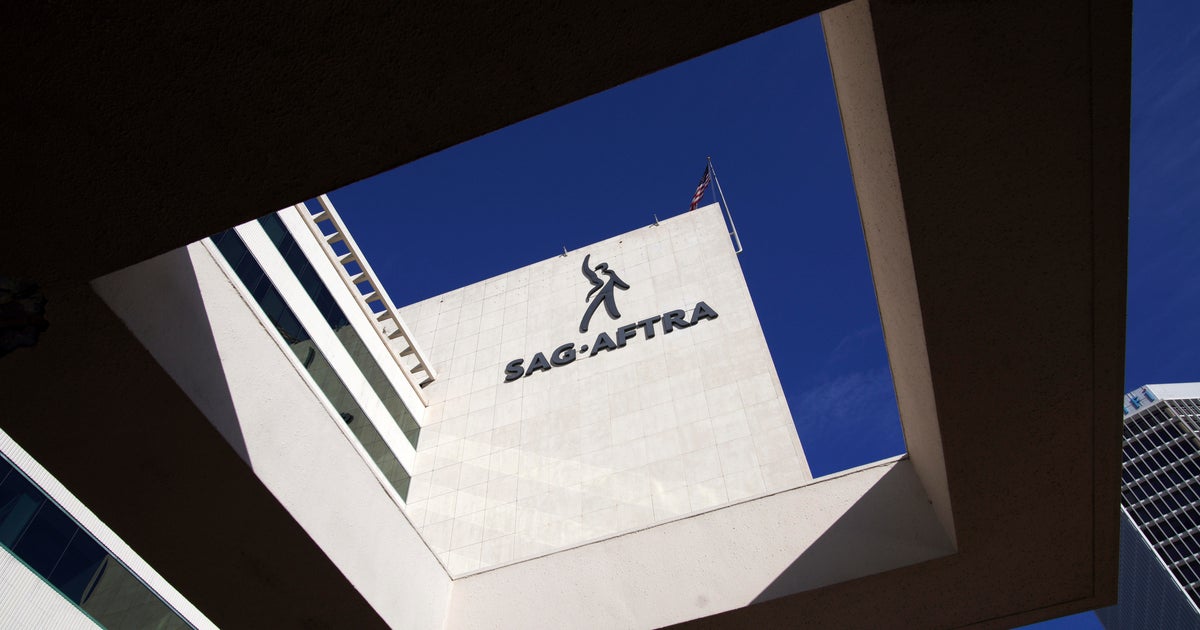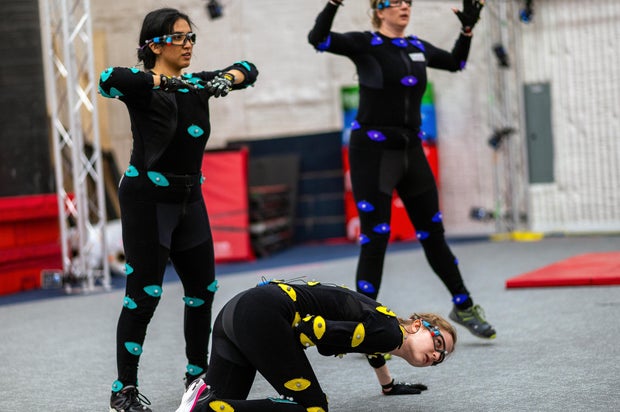CBS News
Video game voice and motion actors announce second strike over AI concerns

Hollywood’s video game performers announced they would go on strike Thursday, throwing part of the entertainment industry into another work stoppage after talks for a new contract with major game studios broke down over artificial intelligence protections.
The strike — the second walkout for video game voice actors and motion capture performers under the Screen Actors Guild-American Federation of Television and Radio Artists — will begin at 12:01 a.m. Friday. The move comes after nearly two years of negotiations with gaming giants, including divisions of Activision, Warner Bros. and Walt Disney Co., over a new interactive media agreement.
SAG-AFTRA negotiators say gains have been made over wages and job safety in the video game contract, but that the two sides remained split over the regulation of generative AI. A spokesperson for the video game producers, Audrey Cooling, said the studios offered AI protections, but SAG-AFTRA’s negotiating committee said that the studios’ definition of who constitutes a “performer” is key to understanding the issue of who would be protected.
“The industry has told us point blank that they do not necessarily consider everyone who is rendering movement performance to be a performer that is covered by the collective bargaining agreement,” SAG-AFTRA Chief Contracts Officer Ray Rodriguez said at a news conference Thursday afternoon. He said some physical performances are being treated as “data.”
James MacDonald/Bloomberg via Getty Images
Without guardrails, game companies could train AI to replicate an actor’s voice, or create a digital replica of their likeness without consent or fair compensation, the union said.
“We strike as a matter of last resort. We have given this process absolutely as much time as we responsibly can,” Rodriguez told reporters. “We have exhausted the other possibilities, and that is why we’re doing it now.”
Cooling said the companies’ offer “extends meaningful AI protections.”
“We are disappointed the union has chosen to walk away when we are so close to a deal, and we remain prepared to resume negotiations,” she said.
Andi Norris, an actor and member of the union’s negotiating committee, said that those who do stunt work or creature performances would still be at risk under the game companies’ offer.
“The performers who bring their body of work to these games create a whole variety of characters, and all of that work must be covered. Their proposal would carve out anything that doesn’t look and sound identical to me as I sit here, when, in truth, on any given week I am a zombie, I am a soldier, I am a zombie soldier,” Norris said. “We cannot and will not accept that a stunt or movement performer giving a full performance on stage next to a voice actor isn’t a performer.”
The global video game industry generates well over $100 billion dollars in profit annually, according to game market forecaster Newzoo. The people who design and bring those games to life are the driving force behind that success, SAG-AFTRA said.
Members voted overwhelmingly last year to give leadership the authority to strike. Concerns about how movie studios will use AI helped fuel last year’s film and television strikes by the union, which lasted four months.
The last interactive contract, which expired in November 2022, did not provide protections around AI but secured a bonus compensation structure for voice actors and performance capture artists after an 11-month strike that began in October 2016. That work stoppage marked the first major labor action from SAG-AFTRA following the merger of Hollywood’s two largest actors unions in 2012.
James MacDonald/Bloomberg via Getty Images
The video game agreement covers more than 2,500 “off-camera (voiceover) performers, on-camera (motion capture, stunt) performers, stunt coordinators, singers, dancers, puppeteers and background performers,” according to the union.
Amid the tense interactive negotiations, SAG-AFTRA created a separate contract in February that covered independent and lower-budget video game projects. The tiered-budget independent interactive media agreement contains some of the protections on AI that video game industry titans have rejected. Games signed to an interim interactive media agreement, tiered-budget independent interactive agreement or interim interactive localization agreement are not part of the strike, the union said.
CBS News
The Menendez Brothers’ Fight for Freedom

Watch CBS News
Be the first to know
Get browser notifications for breaking news, live events, and exclusive reporting.
CBS News
9/28: CBS Weekend News – CBS News

Watch CBS News
Be the first to know
Get browser notifications for breaking news, live events, and exclusive reporting.
CBS News
California Gov. Gavin Newsom vetoes bill requiring speeding alerts in new cars

California Gov. Gavin Newsom vetoed a bill Saturday that would have required new cars to beep at drivers if they exceed the speed limit in an effort to reduce traffic deaths.
California would have become the first to require such systems for all new cars, trucks and buses sold in the state starting in 2030. The bill would have mandated that vehicles beep at drivers when they exceed the speed limit by at least 10 mph.
The European Union has passed similar legislation to encourage drivers to slow down. California’s proposal would have provided exceptions for emergency vehicles, motorcycles and motorized scooters.
In explaining his veto, Newsom said federal law already dictates vehicle safety standards and adding California-specific requirements would create a patchwork of regulations.
The National Highway Traffic Safety “is also actively evaluating intelligent speed assistance systems, and imposing state-level mandates at this time risks disrupting these ongoing federal assessments,” the Democratic governor said.
Opponents, including automotive groups and the state Chamber of Commerce, said such regulations should be decided by the federal government, which earlier this year established new requirements for automatic emergency braking to curb traffic deaths. Republican lawmakers also said the proposal could make cars more expensive and distract drivers.
The legislation would have likely impacted all new car sales in the U.S., since the California market is so large that car manufacturers would likely just make all of their vehicles comply.
California often throws that weight around to influence national and even international policy. The state has set its own emission standards for cars for decades, rules that more than a dozen other states have also adopted. And when California announced it would eventually ban the sale of new gas-powered cars, major automakers soon followed with their own announcement to phase out fossil-fuel vehicles.
Democratic state Sen. Scott Wiener, who sponsored the bill, called the veto disappointing and a setback for street safety.
“California should have led on this crisis as Wisconsin did in passing the first seatbelt mandate in 1961,” Wiener said in a statement. “Instead, this veto resigns Californians to a completely unnecessary risk of fatality.”
The speeding alert technology, known as intelligent speed assistance, uses GPS to compare a vehicle’s pace with a dataset of posted limits. If the car is at least 10 mph over, the system emits a single, brief, visual and audio alert.
The proposal would have required the state to maintain a list of posted speed limits, and it’s likely that those would not include local roads or recent changes in speed limits, resulting in conflicts.
The technology has been used in the U.S. and Europe for years. Starting in July, the European Union will require all new cars to have the technology, although drivers would be able to turn it off. At least 18 manufacturers including Ford, BMW, Mercedes-Benz and Nissan, have already offered some form of speed limiters on some models sold in America, according to the National Transportation Safety Board.
The National Highway and Traffic Safety Administration estimates that 10% of all car crashes reported to police in 2021 were related to speeding. This was especially a problem in California, where 35% of traffic fatalities were speeding-related — the second highest in the country, according to a legislative analysis of the proposal.
Last year the NTSB recommended federal regulators require all new cars to alert drivers when they speed. Their recommendation came after a crash in January 2022, when a man with a history of speeding violations ran a red light at more than 100 mph and struck a minivan, killing himself and eight other people.










